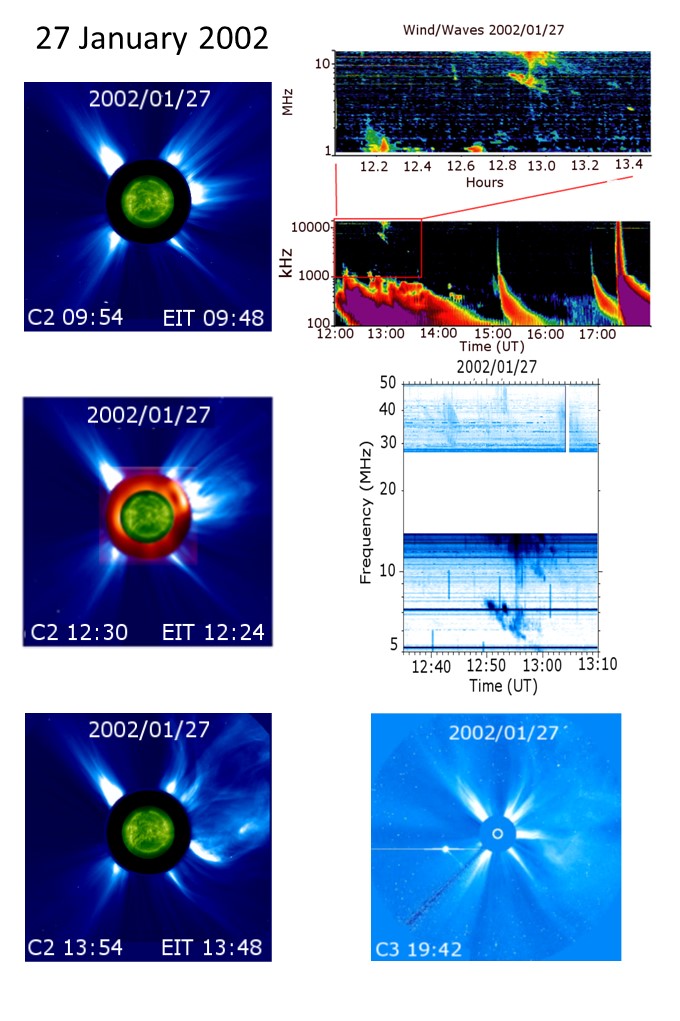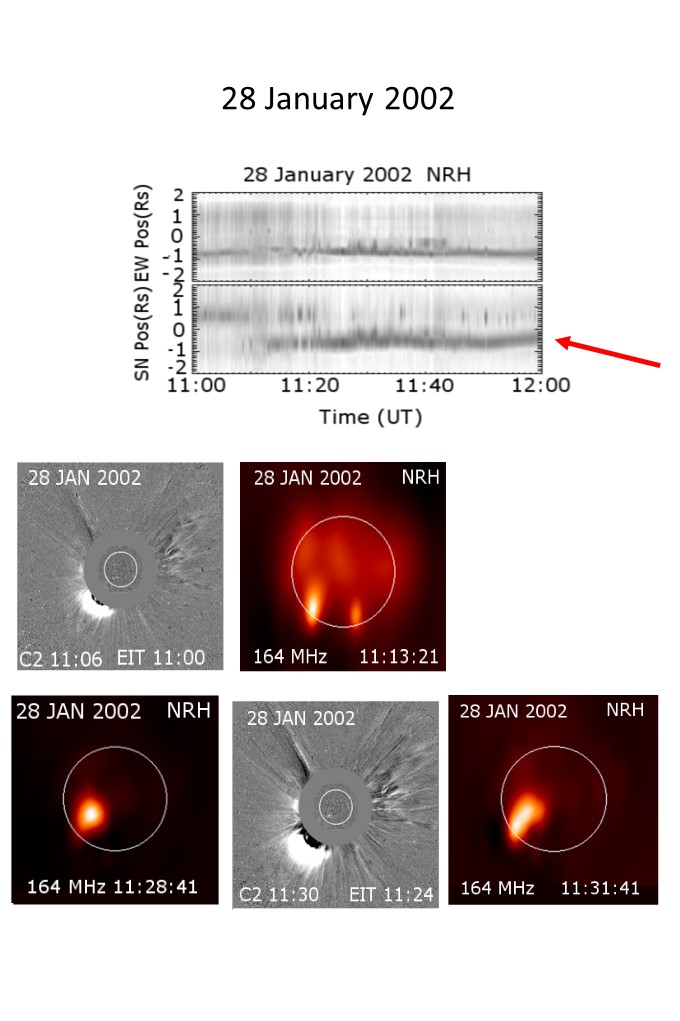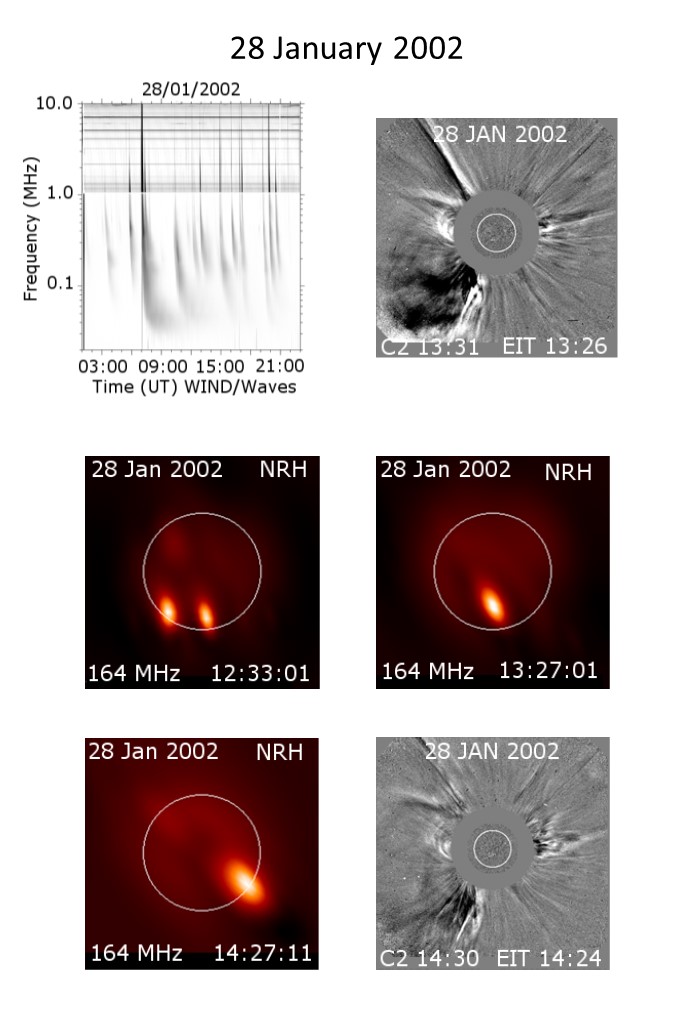January 27-28 2002 (SSC01, -86)MC, CMEH01-CMEN02 (see text)

27 January: Onset of a first CME (CME1) at 09:54 UT ((POS 289 W 45 V= 273 , 361, 690 Km/s) followed, in the same region, by a second faster one (CMEH01) at 12:30 UT (1136, 1000, 1068 km/s) and located on the lowest part of CME1 (no image between (12:06-12:30 UT). This encounter marks the onset of the CMH01/CME1 and then CMEH01/ambient medium interactions. #12:32 UT: a type II burst is detected by the Nançay DAM spectrograph then by WIND/Waves. 12:33-12:39 UT: a weak radio source, observed by the NRH at 164 MHz, is rising roughly from 1.4 to 1.8 Rs (V ~ 260 Km/s); the C2 12:30 panel, upon which the NRH image at 12:33: 47 UT has been superposed, shows that this source is located below CMH01 . 12:35-17:00 UT: During this whole period, the Wind/Waves radio spectrograph displays a multiple-component emission of long duration (14000-300 kHz) . 13:31 UT: CME2 has overtaken CME1 and shows a broad extension in latitude which continues to increase as observed by C3 until 23:42 UT.
This event shares the following characteristics: Continuum long duration (B), Interactions between at least two CMEs and with the ambient medium , Type II burst.


28 January: 11:10 Onset of CMEN02 January 28: 10:54 UT (PA 143 (deg), Width 62 (deg), V 524, 738, 965 Km/s). 11:10-14:00 UT: Onset of a continum (B), detected at 164 MHz( see the red arrow) and 11:10-14:27 UT of a bursty activity ; both emissions are located in the south hemisphere. The source of the continuum is the eastern one. The bursty source is located in the region of open field lines and might originate from the interaction between the CME estern edge, which becomes bright, and the open field line. Note that, to take into account the origin of the source observed at 14:27:11 UT, a similar effect between the open field and the broad region which was the seat of CMEH01 on January 27 and tracked by C3 until at least 23:42 UT, cannot be excluded.
Note in conclusion that, taking into account the propagation aspects of the 27 and 28 events, the second one was considered, in the Bocchialini et al. submitted publication, as more favorable than the first one.